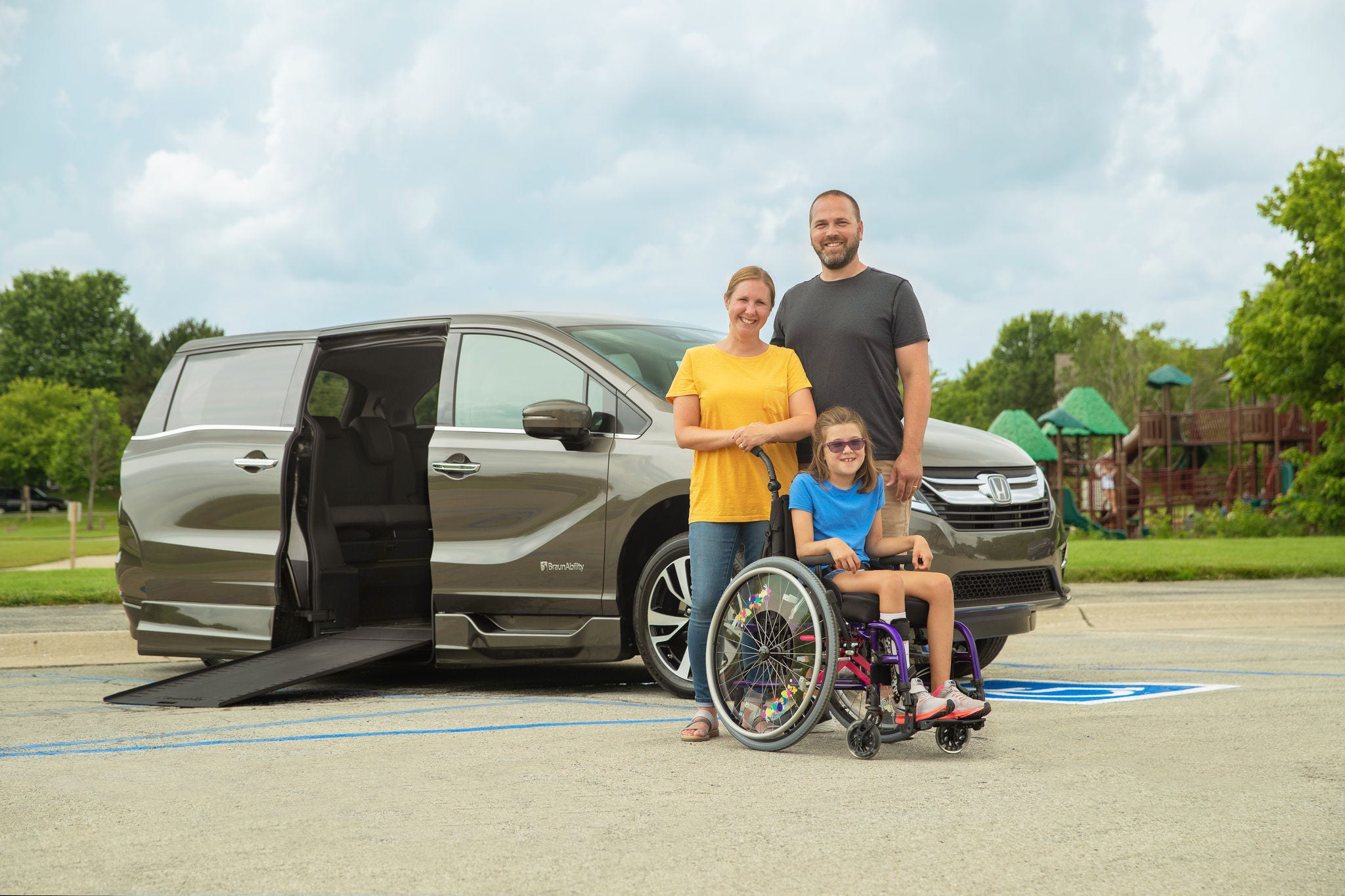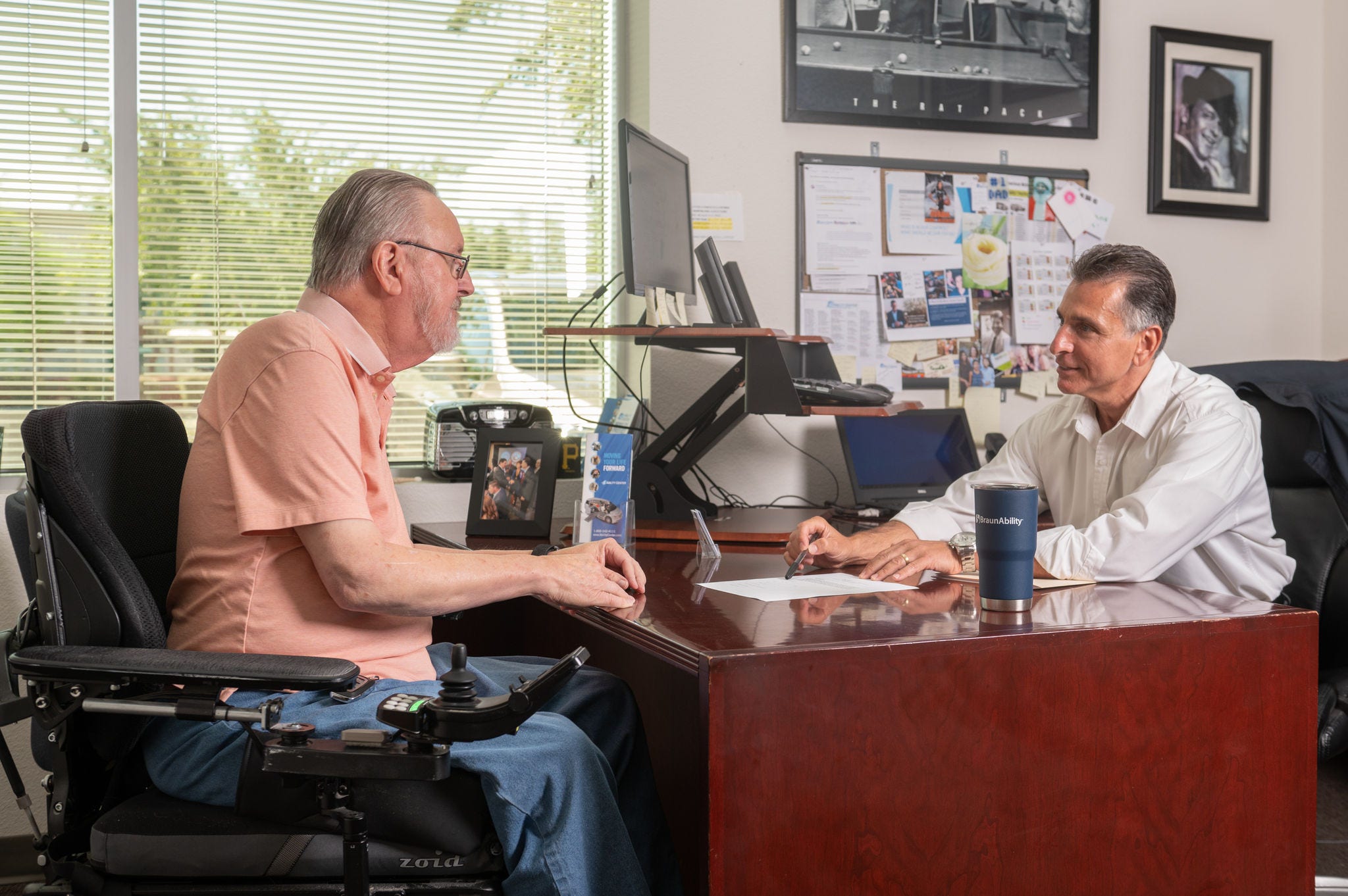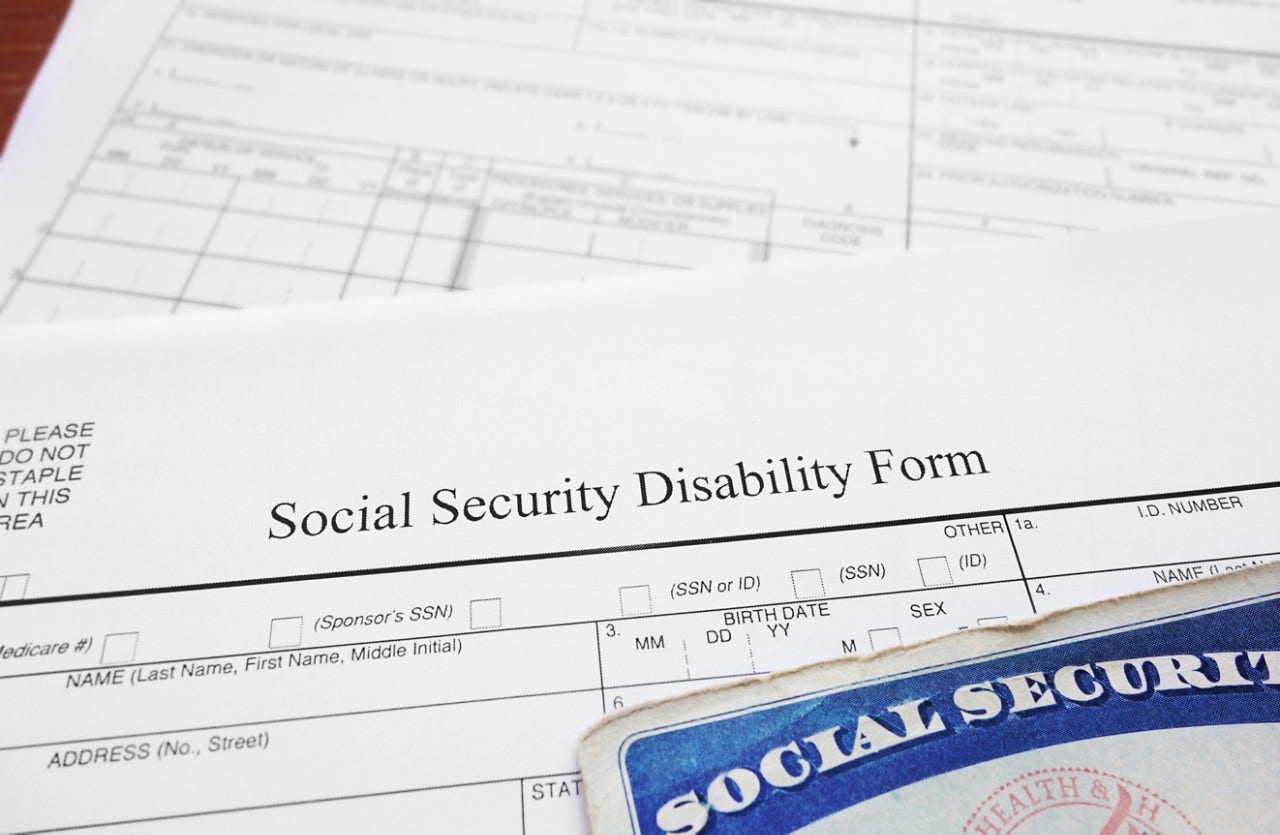
Using HSA, FSA and 529A ABLE Accounts for a Wheelchair Van
A wheelchair accessible van provides independence, freedom, and the ability to connect with the world outside your home. However, the investment required to purchase an accessible vehicle is significant, leading many to wonder how they can afford one. Financial tools such as health savings accounts (HSAs), flexible spending accounts (FSAs) and ABLE (Achieving a Better Life Experience) accounts can help lower the cost of your mobility solution. These accounts provide tax advantages that make an accessible vehicle more financially attainable.
Understanding Insurance: HSAs and FSAs
To understand health savings accounts and flexible spending accounts, it’s important to know the basics of insurance, which works hand in hand with an HSA or FSA.
Insurance
Health insurance helps cover the costs of medical expenses. For example, health insurance may cover durable medical equipment like wheelchairs, specialized therapies for people with disabilities, or your yearly checkup with a primary care provider.
Many health insurance plans are employer-sponsored, meaning your employer helps pay for part of your insurance premium. Depending on the type of health plan you choose—high deductible or low deductible—an employer-sponsored health plan will generally include either a health savings account (HSA) or a flexible spending account (FSA).
Health Savings Accounts (HSA)
An HSA is a special savings account that works with a high deductible health plan (HDHP). It’s designed to help you save money for medical expenses on a tax-free basis. To be eligible for a health savings account, you must be covered by an HDHP and not be enrolled in Medicare. If you are enrolled in Medicare, you generally can’t contribute to an HSA, although you can still use existing HSA funds if you previously contributed. If you are receiving disability benefits, you can often maintain an HSA if you meet the eligibility criteria related to your health plan coverage.
People generally use HSAs for medical expenses not covered by traditional health insurance. Examples of expenses an HSA may cover include over the counter and prescription medications, chiropractic care, acupuncture, and even vehicle modifications for people with disabilities.
Flexible Spending Accounts (FSA)
FSAs are typically offered by employers and can be used even if you are enrolled in Medicare, as long as your employer offers an FSA plan. However, once you retire, you cannot continue to contribute to or use a flexible spending account.
FSAs are typically offered as part of an employee benefits package and do not require a high-deductible health plan. They can be used for medical expenses not covered by traditional health insurance, including vehicle modifications for people with disabilities.
Using HSAs and FSAs for Wheelchair Accessible Vans
HSAs and FSAs can be used to cover vehicle modifications, but not the base vehicle itself. For example, if you purchase a BraunAbility Honda Odyssey, the modifications that make the vehicle accessible may be covered, but the unconverted base vehicle—the Honda Odyssey—cannot be covered by these accounts.
To qualify for coverage, you’ll need a letter of medical necessity from a health care provider. This letter describes the individual’s need for vehicle modifications and is required for both independent drivers and passengers who need modifications, regardless of age.
Vehicle Modifications
The following vehicle modifications are generally covered under HSAs and FSAs:
- Digital driving systems
- Hand controls
- Power door openers
- Wheelchair lifts
- Left foot gas pedals
- Low-effort and zero-effort steering and braking
- Lowered and raised vehicle floors
In some cases, expenses such as fuel, oil, and necessary repairs directly related to using the vehicle for medical transport might also qualify, particularly if it’s the only practical way to transport an individual for medical care. This typically applies to the cost of operating the accessible features, not general vehicle maintenance.
Understanding ABLE Accounts
While HSAs and FSAs are helpful, they are linked to specific health insurance plans. For individuals living with disabilities who may not qualify for an HSA or FSA, or need broader financial support, ABLE accounts—often called 529A plans—offer another solution. These accounts provide a tax-advantaged way for eligible individuals with disabilities to save money without jeopardizing their eligibility for government means-tested benefits, such as Supplemental Security Income (SSI), Social Security Disability Insurance (SSDI), or Medicaid.
What Is an ABLE Account?
The Achieving a Better Life Experience (ABLE) Account provides individuals living with disabilities a pathway to save money for qualified disability expenses. Able accounts are like 529 college savings plans because they offer tax-advantaged growth, but their purpose is specifically for individuals with disabilities.
To be eligible for an ABLE account, an individual must be receiving SSI or SSDI benefits or be able to self-certify their disability with a physician’s diagnosis. The disability must have developed before age 26.
Contributions to an ABLE account are tax-deferred, meaning you don’t pay taxes on the money until you withdraw it. This allows the contributions to grow over time without being taxed each year. Withdrawals for qualified disability expenses are tax-free.
Funds in an ABLE account, up to certain limits, are excluded when determining eligibility for means-tested benefits like SSI and SSDI. Essentially, a person on SSI or SSDI can save money for a qualified disability expense, such as a wheelchair accessible vehicle, without losing those benefits.
What Is a Qualified Disability Expense?
An ABLE account can be used to pay for a wide range of qualified disability expenses that help maintain or improve the health, independence, or quality of life of individuals with disabilities. These expenses do not necessarily have to be specific to the person’s disability. Qualified disability expenses can include:
- Education: Tuition, books, supplies, educational materials, tutoring, and special education services.
- Housing: Rent or mortgage payments, property taxes, utility bills, and home modifications for accessibility.
- Transportation: Purchase or lease of a vehicle, car modifications for accessibility, public transportation costs, and ridesharing services.
- Employment support: Job coaching, costs associated with starting a business, work-appropriate clothing, and assistive technology for work.
- Health and wellness: Medical treatments not covered by insurance, mental health services, dental and vision care, and fitness programs related to disability management.
- Assistive technology: Communication devices, adaptive equipment, and computer software and hardware.
- Personal support services: Home health aides, personal care attendants, and housekeeping and errand services.
- Legal fees: Attorney fees for disability-related issues, guardianship costs, and estate planning.
- Financial management: Financial planning services and tax preparation fees.
- Basic living expenses: Food, clothing, and personal care items.
- Funeral and burial expenses: Costs associated with pre-planning a funeral and burial plot purchase.
How ABLE Accounts Support Vehicle Purchases
A 529A account can be used for both vehicle modifications and the unconverted vehicle. For example, if you purchase a BraunAbility Chevrolet Traverse, funds in an ABLE account may cover both the cost of the base vehicle—the Chevrolet Traverse—and modifications like a ramp or hand controls. Additionally, ongoing costs to keep the accessible vehicle in good working order, especially those related to the accessible features, may also be covered by ABLE funds. Expenses such as gas, oil, tolls, and parking, when using the accessible vehicle for transportation related to the individual’s disability or health needs, may be covered by a 529A.
Financing a Wheelchair Accessible Van
While HSAs, FSAs, and ABLE accounts offer tax benefits, they are not the only options for financing your accessible vehicle. Other financing options include:
- Grants and funding: Many nonprofit organizations offer grants to individuals with disabilities for vehicle modifications or accessible vehicle purchases. Researching local and national organizations dedicated to specific conditions or populations can uncover valuable resources.
- Veteran benefits: If you are a Veteran, the U.S. Department of Veterans Affairs offers specific grants for Veterans with service-connected disabilities to purchase accessible vehicles. Additionally, nonprofit organizations may provide grants or funding for Veterans in need of a wheelchair accessible vehicle.
- Vocational Rehabilitation (VR): VR is a federal-state program that helps individuals with disabilities prepare for, enter, or retain employment. It can provide funding for vehicle modifications like wheelchair ramps and hand controls. To qualify, individuals must undergo an evaluation to determine their needs and eligibility. Once approved, VR works with mobility dealers to ensure the vehicle is properly modified and delivered.
- Vehicle financing: BraunAbility dealers offer financing for new and pre-owned conversions, as well as for wheelchair lifts, seats, and driving controls. Competitive rates and flexible terms are available.
Common Questions About Wheelchair Accessible Van Funding
When it comes to purchasing a wheelchair accessible van, affordability and financial attainability are often top concerns. Here are some common questions about wheelchair van funding:
1. Will Insurance Pay for a Wheelchair Accessible Van?
No, health insurance and car insurance will not cover the purchase of an accessible vehicle or its modifications. However, you can use an HSA or FSA tied to your health insurance to pay for vehicle modifications. Car insurance cannot be used to pay for a wheelchair accessible van but may cover the cost to repair or replace an accessible vehicle and its modifications in the event of an accident.
2. Will Medicare or Medicaid Pay for a Wheelchair Accessible Van?
Medicare and Medicaid do not pay for accessible vehicles. It’s recommended to discuss funding and financing options with your local BraunAbility dealer.
3. Is a Wheelchair Accessible Van Tax Deductible?
While the vehicle itself is not tax deductible, the cost of modifying a vehicle to be accessible can be claimed on a tax return and may be deductible as a medical expense. It’s recommended to speak with a tax professional to determine if any deductions can be applied to vehicle modifications.
Whether you’re looking to purchase a new accessible vehicle or modify a current vehicle with adaptive seating or hand controls, your local BraunAbility dealer can help you find a vehicle that meets both your needs and your budget. Contact your local BraunAbility dealer today to learn more about BraunAbility mobility products and available funding and financing options.




